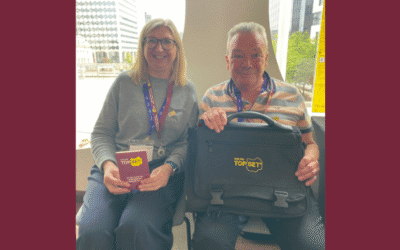The Oil and Gas industry is recognised globally as one of the most vital sectors, acting as the backbone for many other industries and activities through providing energy resources for things such as transportation and manufacturing.
In the UK alone, the oil and gas industry is directly responsible for over 30,000 jobs. Often the work takes place on offshore installations and uses a range of specialised equipment and infrastructure such as oil tankers, offshore support vessels and drilling rigs. Due to the nature of the work involving heights and other inherent hazards, oil and gas incidents can occur more often compared to lower risk industries, which is why safety and prevention is paramount.
Types and Causes of Safety Incidents in the Oil and Gas Industry
The possibility of oil and gas incidents can come from a range of sources:
Physical Hazards
The most obvious of these would be physical hazards such as working at heights or in confined spaces, and operating heavy equipment and vehicles, creating the risks of falling, being trapped in or between objects, being struck, or collisions. These hazards can seem like inherent parts of working in the industry, which is why it’s important to consider them as causes of oil and gas incidents.
Also, wider environmental factors such as severe weather can create dangerous conditions during processing and transportation of oil and gas. In the US, nearly half of the total petroleum refinery capacity and 51% of the total natural gas processing plant capacity is along the Gulf Coast, which is an area that has historically been in the path of tropical storms and hurricanes. In 2005, Hurricane Katrina damaged around 457 pipelines and destroyed more than 100 platforms, disrupting around 95% of crude production in the region.
Chemical Hazards
The risks of handling and processing hazardous substances such as natural gas, crude oil and other chemical additives can also pose threats to safety and environment in the oil and gas industry. This category of incidents can encompass events such as fires, explosions and toxic releases of chemicals. One of the most notorious examples of this type of safety incident in the oil and gas industry is the Piper Alpha Disaster, which occurred in July 1988. The incident was due to a leakage from one of the condensate pipes causing gas to leak, resulting in a large fire and explosion that took three weeks to control. On top of the larger incidents such as fires and explosions, handling these chemicals also poses risks to employee wellbeing, such as causing various health conditions or burns.
Health Hazards
As mentioned above, there are numerous health hazards that oil and gas workers are exposed to besides chemicals. There are a number of environmental and ergonomic stressors such as noise and manual labour that can take a toll on workers’ physical health, leading to conditions such as hearing loss and musculoskeletal disorders. Psychological hazards such as isolation, long work patterns, lack of sleep, or bullying also play a role in causing mental health issues such as stress, depression or anxiety.
Frequency of Oil and Gas Incidents
According to the UK HSE (Health and Safety Executive), in 2021, there were 198 dangerous occurrences reported and 91 hydrocarbon releases. Comparatively, in 2022 there were 175 dangerous occurrences and 77 hydrocarbon releases reported.
In terms of personal safety injuries, there were 72 injuries reported in 2022 with a rate of 310 injuries per 100,000 full-time equivalent workers (FTE). Unfortunately, this injury rate is not comparable to the rate for other industries as it also includes any individual who spent a night onboard an offshore installation, even contractors from other industries such as maintenance, catering or the construction industry.
Within the incidents and injuries reported, ‘slips, trips and falls on the same level’ was the most common type of incident and accounted for 32% of all injuries. Other kinds of incidents included ‘injured while handling, lifting or carrying’; struck by moving, including flying/falling objects’ and ‘contact with moving machinery’. Sprains and strains accounted for 25% of all injuries and fractures accounted for a further 24%, with an upper limb being the most injured body part.
How Can Incidents be Reduced or Prevented?
Due to the complexity of oil and gas incidents and the range of factors that can contribute, there is not one strategy alone that can support the prevention of incidents in the long term. Instead, a variety of elements are necessary for incident reduction and prevention. These can include:
Environmental, Health and Safety Management
Implementing safety procedures that focus on improving the environment for workers plays a vital role in incident management. Effective EHS management can help to minimise environmental impact and also ensures worker safety and wellbeing, which in turn helps reduce the frequency of incidents.
Communication and Participation
Encouraging workers to be engaged with their workplace, and enabling them to communicate when they have concerns about safety issues or potential hazards, can help promote a culture of safety. As a result, workers and team leaders alike can identify and address potential hazards quickly to help prevent incidents before they happen.
Oil and Gas Safety Training
Comprehensive training can be one of the most important steps in reducing safety incidents in the oil and gas industry. Building a foundation of safety knowledge and skills can help workers to identify hazards, effectively follow safety procedures and act appropriately in the event of an incident. Training can include inductions for new recruits, regulatory compliance training, hazard awareness, ongoing refresher training or upskilling.
Effective Incident Investigation
It’s not always possible to prevent an incident from occurring, so if an oil and gas incident does happen, it’s vital to effectively investigate it and accurately identify the root cause(s) in order to prevent the same thing from happening again.
The Kelvin TOP-SET Incident Investigation Method provides a logical, structured and practical approach to incident investigation that is easy to follow and applicable to a variety of industries, including oil and gas. We offer a range of courses, depending on your knowledge level and requirements, that are available in person or online. Our eLearning or Cloud Classroom Courses can be a more viable option for those working offshore or unable to travel and wanting an introduction to investigation or to be part of an investigation team.
Safety incidents in oil and gas provide a significant challenge for the industry as a whole, which requires commitment to continuous improvement through implementing the strategies mentioned above in order to work towards a goal of zero harm. By recognising the importance of incident investigation, and prioritising effective investigation training, companies in the oil and gas industry can take a step closer towards this goal.



